Last-Minute NYC Holiday Gift Guide 🎁
We’ve created a holiday gift guide with presents for the intrepid New Yorker that should arrive just in time—


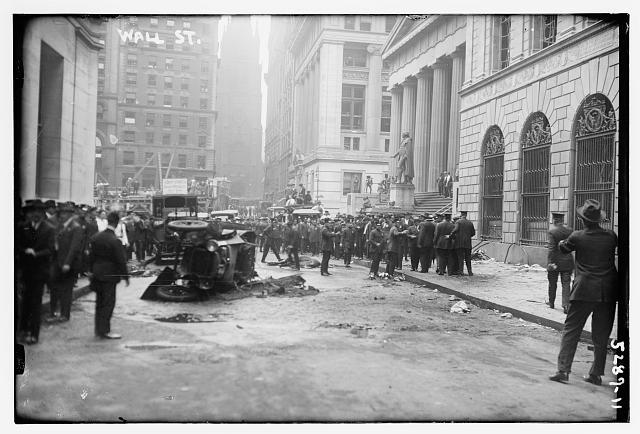
The Bombing of Wall Street in 1920. Image from Library of Congress
While you probably maintain a black and white image of dirty young intellectuals huddled around a table in a dark room building a device for destruction, anarchy in 20th century New York developed as a social, political, and humanitarian movement in reaction to the ideologies of oppressive governments at the time. However, the movement quickly became violent, and its legacy today holds negative connotation. Its conspirators didn’t just gather in grimy tenements on the East Side of Manhattan. Members of anarchist groups met anywhere from the Upper East Side to East Williamsburg, targeting influential New Yorkers as important as John D. Rockefeller and J.P. Morgan and left their mark on places from Wall Street to Union Square.
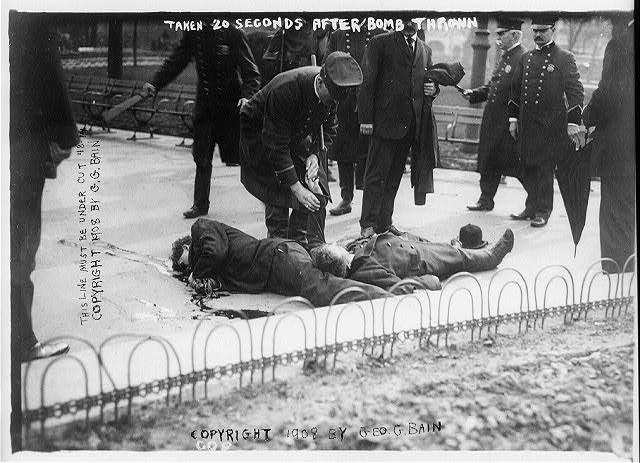
Image from Library of Congress
In March of 1908, Selig Cohen (also known as Selig Silverstein), a Russian member of the Anarchist Federation of America, threw a bomb during a socialist meeting in Union Square. The bomb prematurely detonated, killing a bystander and mortally wounding the bomber. The bystander, Ignatz Hildebrand, is thought to have been involved in the plot as well. The man being searched in the photograph was the police’s number one suspect, Max Dolinger, right after the bomb was thrown.
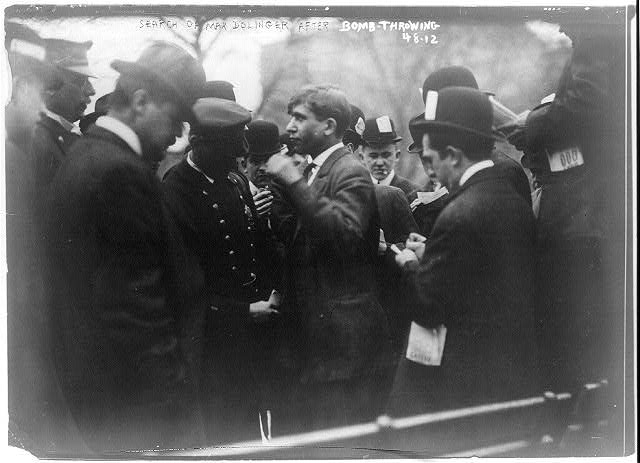
Image from Library of Congress

Photo by New York World-Telegram and the Sun Newspaper Photograph Collection from Library of Congress
On September 16th, 1920, a horse drawn wagon pulled up beside 23 Wall Street, then serving as the headquarters of J.P. Morgan’s bank. An explosion shattered windowpanes in the 10-block radius, caused by a bomb that was on the inconspicuous wagon. The explosion killed 36 to 38 people and caused more than two million dollars worth of damage. Although they were never able to prove it, investigators were convinced that anarchists had been behind the attack.
For the full story and photos of 23 Wall Street today, see The Bombing of Wall Street
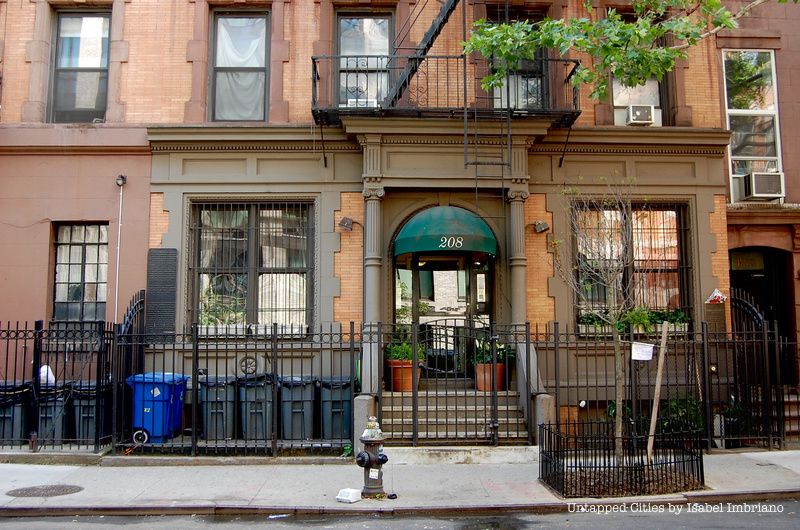
Emma Goldman, who the Greenwich Village Society for Historic Preservation called “the most dangerous woman in America” lived at 208 East 13th Street from 1903 to 1913. She was highly involved in the East Village anarchist scene, speaking regularly in the area, printing her Mother Earth anarchist journal next door to her tenement residence, hosting events at Webster Hall and at the Great Hall at Cooper Union. Her influence goes far beyond New York; Goldman helped to develop much of the political philosophy of anarchy from North America to Europe.
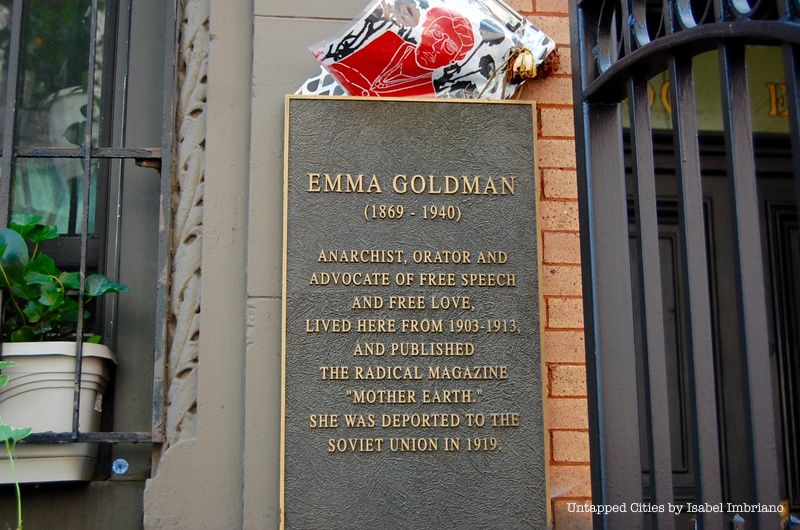
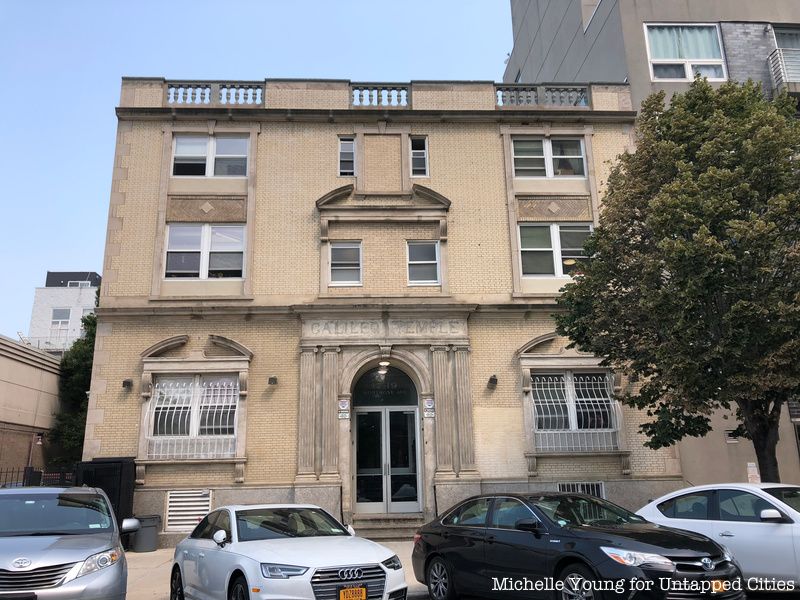
Brooklyn’s Galileo Temple was used by the Sicilian community and for meetings of local anarchist groups. Sicilian Americans formed two mutual aid societies and contributed to the American labor movement. The temple was used by two anarchist groups in Brooklyn: the Circolo Volontà and the Anarchist Group of South Brooklyn. In Anarchist Voices, Paul Avrich gives accounts of Galileo Temple being used by anarchist Salvatore Pernicone who “gave plays there, in the Galileo Temple on Montrose Avenue.” Furthermore, Magistrate Sylvester F. Sabbatino gave a talk on the state of British and Italian government, praising Mussolini on the 20th of December, 1935.
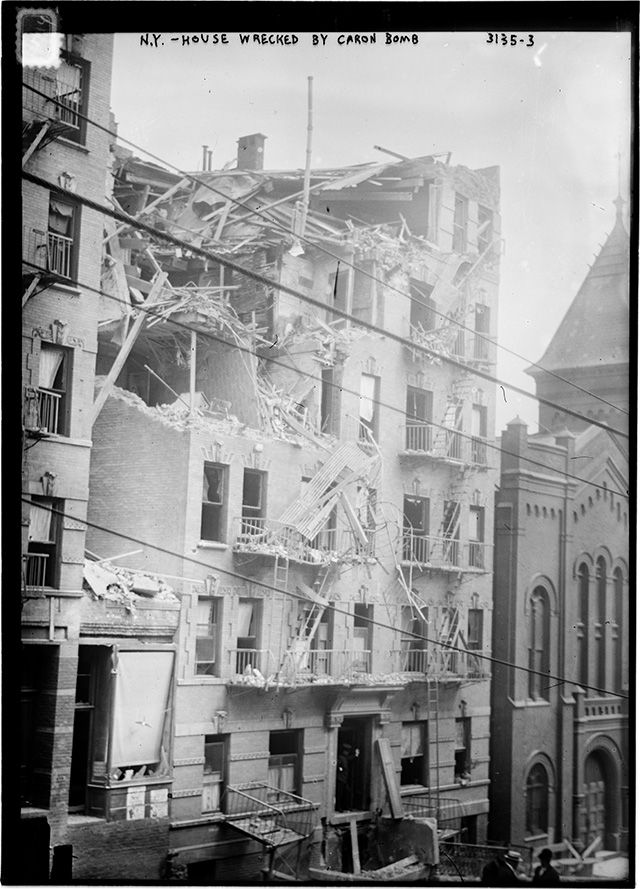
Image from Library of Congress
On July 4th, 1914, members of the Industrial Workers of the World group set off a bomb in Louise Berger’s apartment at 1626 Lexington Avenue. The bomb had been meant for John D. Rockefeller, but the young anarchists set it off accidentally. Four died, but a fifth exited the building minutes before the detonation and disappeared, and dozens more were injured. The top two floors of the building were gone, revealing the innards of Louise Berger’s apartment. She had been a member of the Anarchist Red Cross and had lent her apartment to her anarchist friends to build the bomb.
For the full story and more conspiracy, see The Strange History of New York’s Anarchist School.
Some anarchists failed and only injured themselves, but others managed to harm both their targets and uninvolved victims. Meanwhile, others stuck with propagating ideologies and stayed away from the bombs and murders. There was a time when New York may have been full of dark rooms of plotting conspirators, but activity has been relatively quiet in recent memory…
For more criminal reading, check out 5 Beautiful Murder Scenes in NYC and Notorious NYC Crime Scenes.
Subscribe to our newsletter